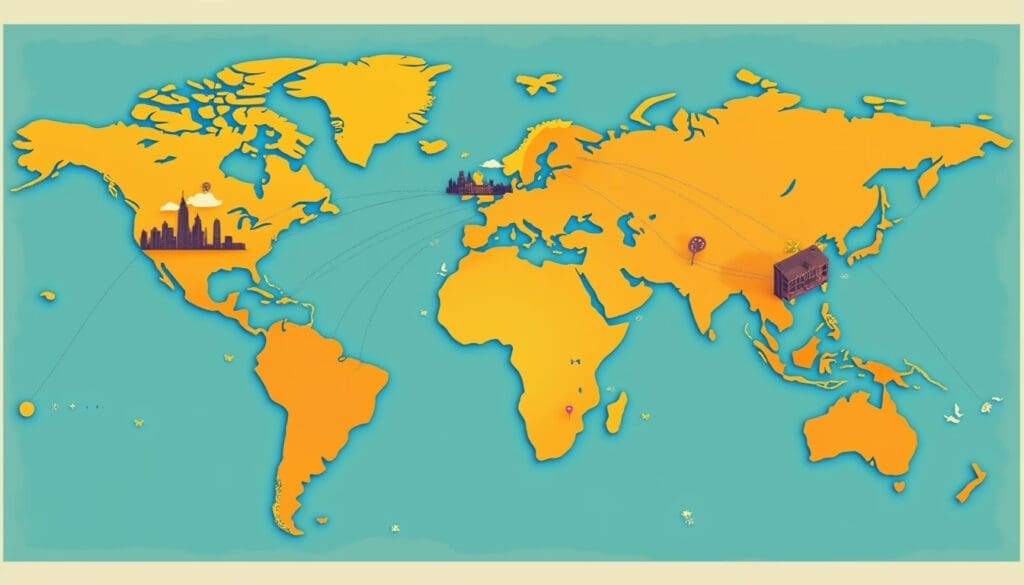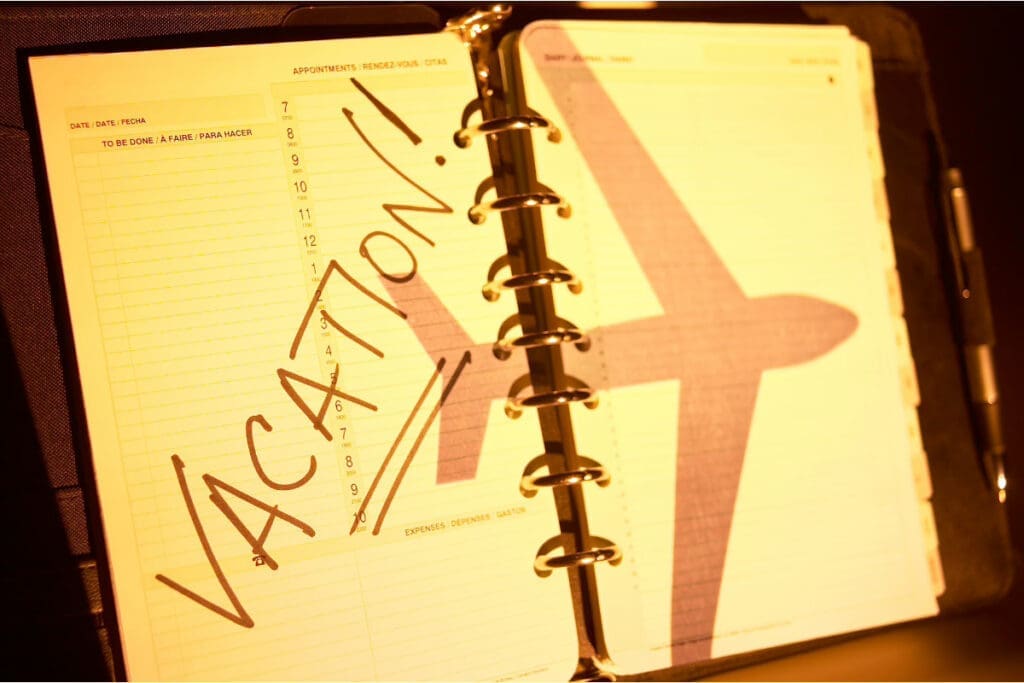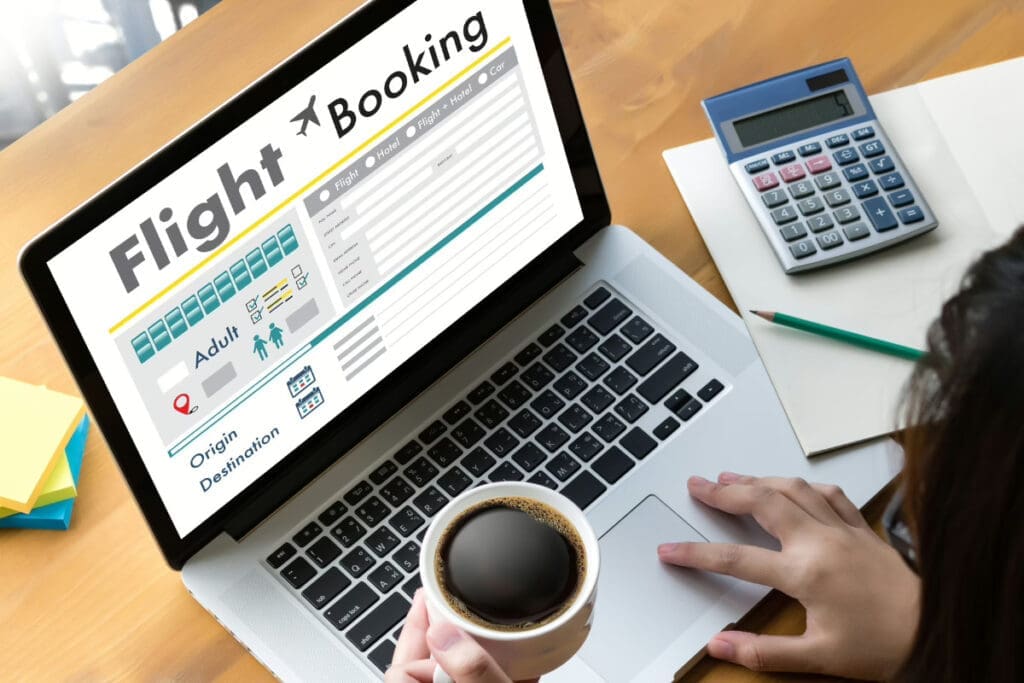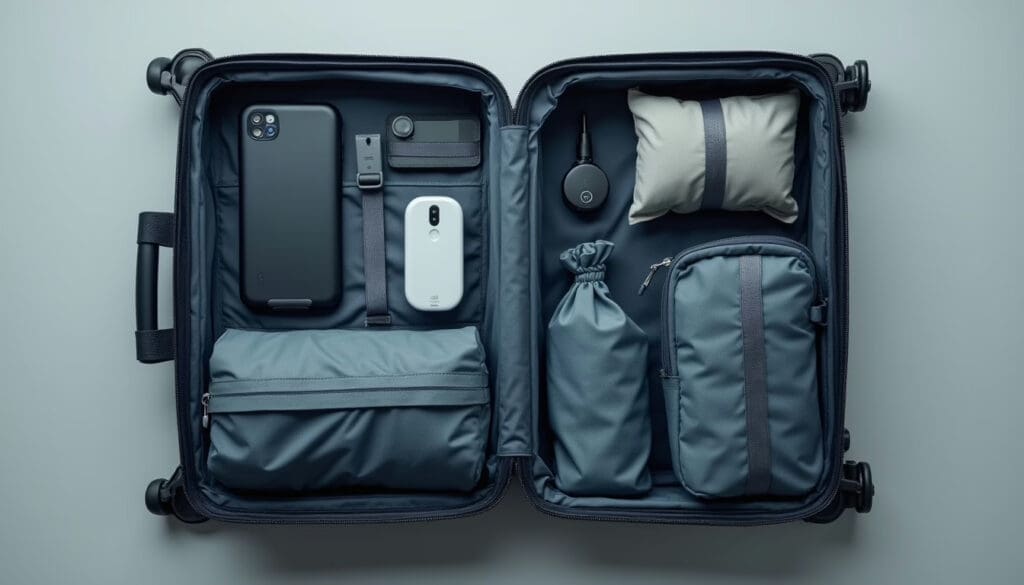How to Plan Travel Itinerary begins with excitement. The idea of exploring new cities, cultures, and tastes fills anyone with hope. But getting there without a plan? That can lead to missed flights, closed museums, or a dinner of instant noodles in your hotel room. The trick is in the planning. Smart travelers, from Rick Steves to KAYAK’s team, know that mapping out your journey in advance saves you stress, cash, and hours of backtracking. Whether you’re heading to Paris, Rome, Tokyo, or a nearby national park, a well-planned route ensures you make memories, not mistakes.
Contents
- 1 Why a Well-Planned Travel Itinerary Makes All the Difference
- 2 Step 1: Setting Your Destination Goals
- 3 Step 2: Budgeting Your Adventure
- 4 Step 3: Crafting an Itinerary Blueprint
- 5 Step 4: Booking Essentials—Locking in Key Details
- 6 Step 5: Organizing the Fine Print for a Seamless Trip
- 7 Leveraging Tech Tools for Stress-Free Planning
- 8 Expert Tips for Flexibility and Spontaneity
- 9 Getting Local: Connect with Guided Tours and Experiences
- 10 Take Off with Confidence—Your Pro-Level Itinerary Awaits
- 11 Everything you want to know, answered below
- 11.1 How to plan a travel itinerary for Europe
- 11.2 What is the best app to plan a travel itinerary?
- 11.3 How to create a travel itinerary on Google Maps
- 11.4 Step-by-step guide to planning a travel itinerary
- 11.5 How do I organize a 7-day travel itinerary?
- 11.6 Best websites for planning travel itineraries
- 11.7 How to plan a travel itinerary with multiple cities
- 11.8 What tools help plan a travel itinerary efficiently?
- 11.9 How far in advance should I plan a travel itinerary?
- 11.10 Travel itinerary planner for first-time travelers
- 11.11 What mistakes to avoid when planning travel itinerary
- 11.12 How to plan a flexible travel itinerary
- 11.13 Can ChatGPT help plan my travel itinerary?
- 11.14 What’s the best format for a travel itinerary?
- 11.15 How to plan a travel itinerary with kids
- 11.16 Is it better to plan your itinerary or go with a tour?
- 11.17 How to include rest days in your travel itinerary
- 11.18 How to create a printable travel itinerary
- 11.19 Where to find sample travel itineraries online
- 11.20 How to plan a travel itinerary for a road trip
Why a Well-Planned Travel Itinerary Makes All the Difference
Anyone can book flights and show up. But having a travel itinerary sets you apart. You save cash by booking when rates are low using sites like Trip.com and Booking.com. You don’t wander or miss landmarks like the Colosseum, the Louvre, or Machu Picchu. If plans change, you pivot with ease because you know the details. A travel itinerary also lets you pack the right shoes, plan for weather, and reserve tables at top local gems—no more waiting in line for breakfast in Barcelona.
Good itineraries balance sightseeing and downtime. They include backup plans, emergency contacts, and travel insurance from Allianz or World Nomads. They help you avoid tourist traps and instead connect with real experiences.
Step 1: Setting Your Destination Goals
Dream Destinations: How to Choose Where to Go
Start by making a “travel bucket list.” Pick a few places that spark your interest. Do you dream of eating sushi in Osaka or hiking in Patagonia? Research destinations using Lonely Planet, National Geographic, or Instagram for ideas.
Think about your reasons for traveling. Is it adventure, food, relaxation, or culture? Do you have a week, or several months? Consider travel restrictions, local events, and weather.
Aligning Your Trip with Seasonal Events and Festivals

Check calendars for festivals, markets, and events—think Carnival in Rio, cherry blossoms in Kyoto, or Oktoberfest in Munich. Trip.com and Time Out are helpful for local happenings. Traveling during a festival can make your trip more memorable, but it often comes with higher prices and larger crowds. Planning based on your needs is key to success.
Must-See Attractions vs Hidden Gems

List out major landmarks, but research lesser-known spots as well. Rome’s Colosseum is iconic, but Trastevere serves the city’s best pasta off the tourist track. Follow travel bloggers, local guides, and Google Maps reviews to discover hidden gems. A balanced trip includes both bucket-list sights and unique experiences.
Step 2: Budgeting Your Adventure
Estimating Expenses: Flights, Hotels, and More
Outline your big costs: airfare (check Aivasales, Trip.com, or Kiwi.com), hotels (compare Hotellook, Airbnb, or Hostelworld), daily meals, transit, and tickets to attractions. Create a spreadsheet for clarity.
Consider exchange rates with Wise or XE, and check if you need cash or cards. Set aside extra for emergencies.
Travel Hacks for Saving on Transport and Accommodation

Look for flight deals with alerts from Trip.com. Book mid-week arrivals for lower fares. Public transport, like the Eurail pass or city metros, often beats taxis. Consider hostels, guesthouses, or off-season stays for deals.
For hotels, check different platforms and bundle offers. Try hotel reward programs with Marriott Bonvoy or Hilton Honors.
Allocating Funds for Experiences, Food, and Shopping

Don’t forget museums, local tours, and foodie treats. Allot daily spending money. Prioritize a couple of “splurge” activities or meals. Budget for shopping at local markets or souvenirs.
Step 3: Crafting an Itinerary Blueprint
Mapping Out Your Route with Google Maps and Rome2rio

Plot must-see spots on Google Maps. Use Rome2rio to check routes, whether by train, bus, or rental car. Identify travel times between cities, hotels, and attractions.
Use My Maps or Wanderlog to organize markers and notes. Factor in border crossings or ferry schedules if exploring multiple countries.
Deciding How Many Days in Each City (or Beach!)

List the top things to do in each place. Paris might get three days, while a small seaside town could get one. Consider pace—do you want to rush or relax? Use sample itineraries from Frommer’s or Nomadic Matt for ideas.
Mixing Activities: Sightseeing, Relaxation, and Adventure
Divide days into blocks: mornings for museums or tours (like the Vatican), afternoons for parks or rest, evenings for food or nightlife. Alternate busy days with slower ones. Include buffer time for the unexpected.
Step 4: Booking Essentials—Locking in Key Details

Reserving Flights with Skyscanner or Kayak
Compare flight dates and prices on Trip.com or Skyscanner. Check baggage rules and connection times. Read reviews on airlines before booking. Confirm tickets with direct emails from the provider.
Choosing the Perfect Accommodation via Hotellook or Airbnb

Match your lodging to your vibe—family hotels, city apartments, or rural cabins. Read recent reviews and check refund policies. Use Airbnb for authentic stays hosted by locals. Look for central spots near transit.
Do You Need a Rental Car, Rail Pass, or City Card?
Research if trains, trams, or buses work best. In Europe, a Eurail Pass often beats driving. For remote spots, check rental cars at Enterprise or Hertz. If you need a convenient ride from the airport or a private transfer between cities, GetTransfer.com is a smart option — it lets you compare offers from local drivers and book affordable transfers in advance. Urban travelers should consider a city pass for discounted museums and public transit. Go City offers one popular option — a digital sightseeing pass that bundles dozens of attractions, tours, and experiences into a single price, letting you save up to 50% and explore at your own pace with just a scan via their app
🔍 What Go City Offers
- A single pass covering major attractions in 30+ cities across Europe, North America, Asia, and Oceania — everything from iconic landmarks to quirky museums and local experiences.
- Two flexible pass options:
- Explorer Pass: Choose a set number of attractions over 30 days
- All-Inclusive Pass: Visit unlimited attractions for 1–10 consecutive days.
- Big savings and convenience: Save up to 50% compared to purchasing tickets separately — if you don’t save, Go City guarantees a refund. All access is via a mobile app, making entry seamless and paper‑free
🔍 What GetTransfer Offers
GetTransfer is a global transfer booking platform that helps you arrange affordable, door-to-door transportation in over 180 countries — whether you’re heading to the airport, hotel, or a remote destination.
Here’s what makes GetTransfer useful for travelers:
- Private Transfers at the Best Price: Submit your trip details and receive multiple offers from professional drivers. You choose the best deal — often cheaper than local taxis or ride-hailing apps.
- Wide Coverage: Works in 180+ countries, ideal for both city trips and hard-to-reach areas where public transit may be limited.
- Upfront Pricing, No Surprises: Know the full cost before you book. No metered rides, no surge pricing.
- Various Vehicle Options: From economy cars to luxury vans and buses, perfect for solo travelers, families, or large groups.
- Airport Pickup Guarantee: The driver monitors your flight and waits up to 60 minutes at no extra charge — great peace of mind after a long flight.
- Extra Services Available: Request child seats, luggage assistance, or even a driver who speaks your language.
Step 5: Organizing the Fine Print for a Seamless Trip
Applying for Visas and Checking Passport Validity

Check official embassy sites for visa needs and entry rules. Your passport should be valid six months beyond your return. Get digital and paper copies of key documents.
Health Matters: Travel Insurance and Vaccinations
Buy travel insurance for health and cancellations. Compare plans with World Nomads or Allianz Global. Ask your doctor about required vaccines or medicines. Bring prescriptions, and carry a simple first aid kit.
Packing Smart: Essentials for Every Destination

List weather, culture, and dress code. Pack layers, a power bank, adapters (like for UK or EU plugs), and travel-size toiletries. Always bring a reusable water bottle and snacks for transit days. Double-check the allowed luggage size and weight.
Leveraging Tech Tools for Stress-Free Planning
Download apps like Google Maps (offline maps), XE Currency, and Google Translate. For bookings, keep Booking.com, TripAdvisor, and Airbnb handy. Use WhatsApp for free calls and texts abroad.
Using TripIt to Keep Your Plans in Sync
TripIt gathers all your bookings—flights, hotels, car rentals—into one app. Just forward confirmation emails, and it builds your itinerary. Share it easily with friends or family members.
Expert Tips for Flexibility and Spontaneity

How to Leave Room for Unexpected Adventures
Don’t overpack your schedule. Chill out in free afternoons or buffer days. Ask hotel staff or Airbnb hosts for local tips. Some of the best moments are unplanned.
Weather and Time Zone Considerations
Monitor weather with AccuWeather or the Weather Channel. Plan for rain or heat. Jet lag can slow you down, so keep the first and last days open. Download a time zone converter to avoid missed tours or trains.
Getting Local: Connect with Guided Tours and Experiences

Booking with Viator or GetYourGuide
Viator and GetYourGuide offer vetted tours for any interest—cooking classes, city walks, or volcano hikes. Check reviews for the best guides and fair prices.
Meet Locals Through Airbnb Experiences
Airbnb Experiences book unique local activities—wine tastings, surf lessons, art walks hosted by city residents. They add a personal touch to your trip.
Enable flexibility by searching for last-minute tours once you arrive. Always check real traveler feedback and safety.
This content sets you up for pro-level itinerary planning, ensuring you travel smarter, safer, and with more joy.
Top Mistakes to Avoid When Planning Your Travel Itinerary
How to Plan Travel Itinerary can get tricky. Many travelers fall for some common mistakes that cause stress and mess up their plans. Knowing what to watch for helps you save time and money.
Skipping logistics is one big error. Don’t book two back-to-back activities on opposite sides of a city. Use Google Maps or Rome2rio to check travel times. Overbooking each day can backfire too. You’ll get tired and miss enjoying key sites.
Not researching local holidays and opening times could spoil visits. Many museums and restaurants close on certain days or during festivals. Always check ahead. Relying on just one booking platform, like Aviasales or Hotellook, can make you miss deals or types of stays.
Forgetting travel insurance is another risk. Health issues, delays, or lost luggage can happen to anyone. Choose a plan that covers the basics and your most valuable gear.
Ignoring the fine print or visa requirements is risky. Visit official embassy websites for the most current info. Don’t just rely on quick tips found on forums or social media.
Forget to check the weather? Pack the wrong clothes and you’ll regret it. Always add a buffer day for serendipity and delays. It keeps plans fun even when things change.
Trying to do too much in one day leaves no room for exploring local life. Savoring a great meal in a plaza or chatting with a local guide can be the best part of a trip.
Sample 7-Day Itinerary for Europe (Paris, Rome, and Barcelona)
A well-planned week in Europe lets you see top attractions, taste local food, and soak in new cultures.
Day 1: Paris Morning: Land at Charles de Gaulle. Check into your central hotel via Booking.com. Afternoon: Relax at a café near the Eiffel Tower. Stroll River Seine. Evening: Louvre Museum. Dinner in the Latin Quarter.
Day 2: Paris Morning: Notre-Dame Cathedral, Sainte-Chapelle. Afternoon: Montmartre walking tour (Viator). Evening: Catch sunset from Sacré-Cœur.
Day 3: Rome Morning: Early flight (Skyscanner) to Rome. Afternoon: Check in. Pizza lunch near Trevi Fountain. Evening: Colosseum guided tour, then gelato in Trastevere.
Day 4: Rome Morning: Vatican Museums and St. Peter’s Basilica (GetYourGuide). Afternoon: Stroll through the Pantheon and Piazza Navona. Evening: Workshop with a local chef (Airbnb Experiences).
Day 5: Barcelona Morning: Train to Barcelona (Eurail Pass). Afternoon: Explore the Gothic Quarter. Evening: Tapas dinner, walk La Rambla.
Day 6: Barcelona Morning: Sagrada Família visit (Book ahead). Afternoon: Parc Güell for Gaudí’s art. Evening: Flamenco show.
Day 7: Barcelona Morning: Local market visit (La Boqueria). Afternoon: Last-minute shopping. Evening: Wrap up with a meal at a seaside paella spot.
Takeaway tips: Use TripIt to sync bookings. Check WiFi, carry maps offline, and keep copies of your documents.
Take Off with Confidence—Your Pro-Level Itinerary Awaits

Smart planning ensures your trip goes from dream to real. Know what matters—personal interests, budget, and memorable moments. Use technology, trusted travel apps, and authentic resources like Rick Steves or Lonely Planet for advice.
Flexibility is key. Leave space for fun surprises. Always have a backup plan. Make copies of your bookings and important IDs. Treat yourself to an experience or meal that feels special.
Connect with locals and try new things. Eat at a local bistro, join a walking tour, or wander a market. These simple interactions create the best travel memories.
Planning isn’t only about details—it’s about crafting a trip that feels just right for you. Tweak your itinerary as you go. Adapt to weather or mood. Enjoy every bit of your journey, knowing you’re set up for success.
Ready to see the world your way? Start planning today and watch your adventure unfold. Your next itinerary is only a few clicks away.
Everything you want to know, answered below
How to plan a travel itinerary for Europe
Start with your top cities. Pick how many days per place. Book transport early.
What is the best app to plan a travel itinerary?
Google Travel, TripIt, and Roadtrippers help organize flights, hotels, and stops.
How to create a travel itinerary on Google Maps
Drop pins for spots. Add directions. Save your map for offline use.
Step-by-step guide to planning a travel itinerary
Pick your destination. Set dates. Research sights. Map your route. Book stays.
How do I organize a 7-day travel itinerary?
Divide days by area. Group nearby attractions. Add rest and food stops.
Best websites for planning travel itineraries
Try Rome2Rio, GetYourGuide, and Booking.com for routes, tours, and accommodations.
How to plan a travel itinerary with multiple cities
Use trains or cheap flights. Plan time per city. Avoid too much moving.
What tools help plan a travel itinerary efficiently?
Use Trip.com for flights, Hotellook for stays, and Google Docs for notes.
How far in advance should I plan a travel itinerary?
Three months ahead is ideal. You’ll get better deals and more choices.
Travel itinerary planner for first-time travelers
Use templates or apps. Start small. Keep days open for surprises.
What mistakes to avoid when planning travel itinerary
Don’t overbook. Check transport times. Leave room for delays or breaks.
How to plan a flexible travel itinerary
Add backup options. Leave one open day. Avoid strict bookings.
Can ChatGPT help plan my travel itinerary?
Yes. It can list spots, suggest routes, and even build your plan.
What’s the best format for a travel itinerary?
Use a simple table: day, time, place, notes. Keep it clear and printable.
How to plan a travel itinerary with kids
Add kid-friendly spots. Keep travel short. Plan breaks and snacks.
Is it better to plan your itinerary or go with a tour?
If you love freedom, plan your own. If not, join guided tours.
How to include rest days in your travel itinerary
Add one rest day every three. Use it to sleep in or wander.
How to create a printable travel itinerary
Use Word or Canva. Add maps and times. Export as PDF.
Where to find sample travel itineraries online
Check Pinterest, Lonely Planet, and travel blogs like BestAdventurer.com.
How to plan a travel itinerary for a road trip
Map your route. Note fuel stops. Check for attractions and weather.




Really well-written article! 👏 I enjoyed the way you broke down the topic—it feels very genuine and helpful, not just theory. The practical tips make it easy for readers like me to connect and actually take something useful away.At meinestadtkleinanzeigen.de , we’re building a directory and classifieds platform in Germany where people can discover businesses, services, and opportunities across many categories. That’s why I especially value content like yours, because it shows how sharing knowledge online can really create connections.Keep up the great work—I’ll definitely be following along for more insights! 🚀